
Comet Tsuchinshan-Atlas may be disintegrating
Observers around the world have been waiting for the next great comet to become visible to the naked eye. And many thought Comet Tsuchinshan-ATLAS might be it! Discovered in early 2023, the comet had a chance of brightening substantially around the time of its closest approach to Earth and the Sun in October 2024. But in recent months, as the comet C/2023 A3 Tsuchinshan-ATLAS has been approaching the inner solar system. ought Observers were puzzled because they did not notice an increase in brightness over the past three months. And now a new study suggests that the comet's nucleus is fragmenting.
The author of the article, Zdenek SekaninaCzech-American astronomer and comet expert at NASA's Jet Propulsion Laboratory said that on July 8, 2024, the comet has entered an advanced phase of fragmentation. He said that the end of the Tsuchinshan-ATLAS comet is inevitable.
However, comets are known for being erratic and unpredictable, so we'll have to wait a few nights or weeks to see what happens with them. If you have a small telescope, you can take a look for yourself. Check out the graphics below.
Tsuchinshan-ATLAS Comet Search Charts
If the comet is disintegrating and you still want to see it, you'll have to dust off your telescope. According to The Sky Live, the magnitude of the comet is 9.6far beyond the reach of the human eye. Here are some location maps to help you locate it.
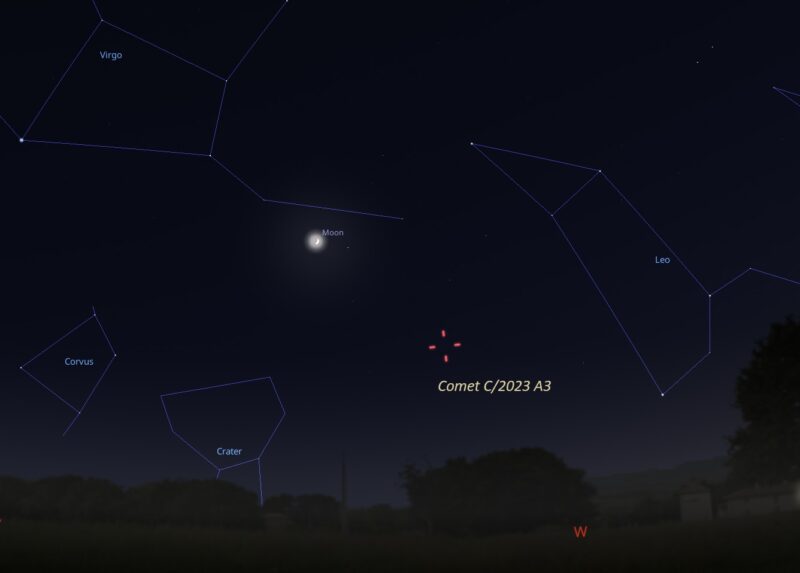
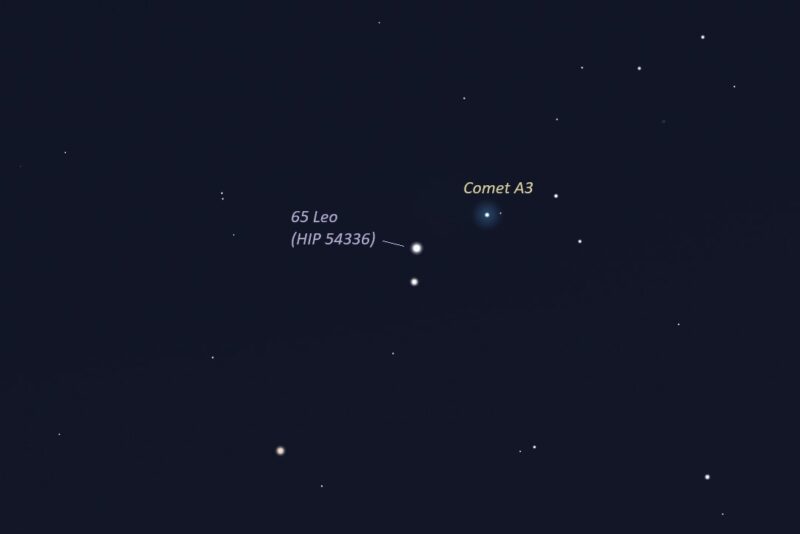
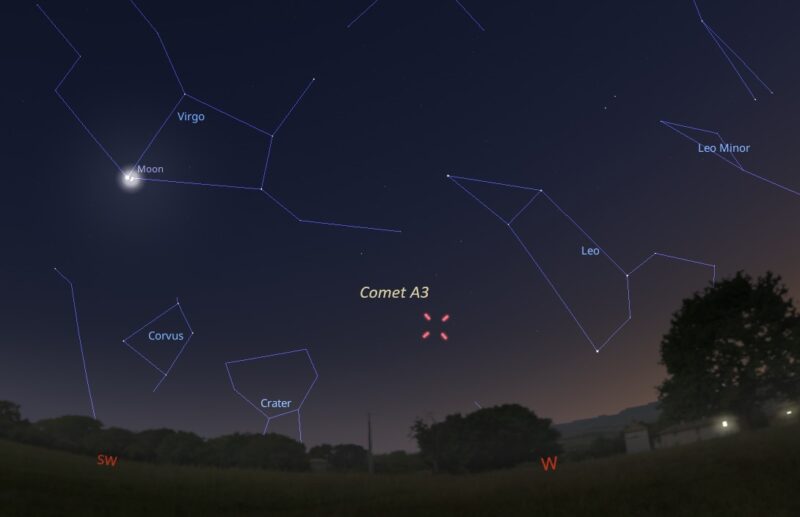
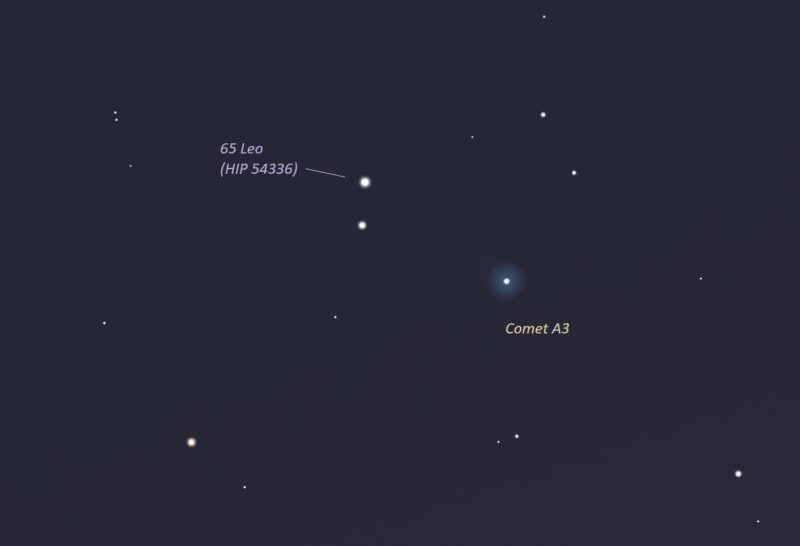

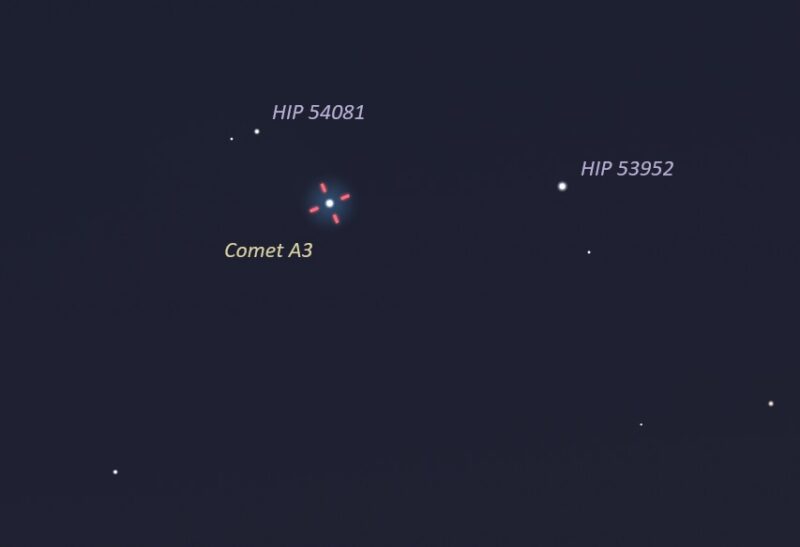
What should we expect?
Comet Tsuchinshan-ATLAS is incredibly fast. It is hurtling through the inner solar system at 290,664 kilometers per hour (80.74 kilometers per second), relative to Earth. And its astonishing speed can be seen with a small telescope. You can see the comet's gradually changing location by comparing its exact position with the background stars just 15 minutes later.
As it approaches the inner solar system, the celestial visitor from the Oort cloud It should cross the orbit of the planet Mars around July 16, 2024. The comet will make its closest approach to the Sun (its perihelion) on September 27, 2024.
According to Sekanina's new study, the comet could disintegrate before reaching perihelion. These predictions are based on the comet's current behavior. But will it happen?
If it remains intact…
If the comet does not disintegrate, current estimates indicate that around September 27, 2024, it would be between magnitude three and magnitude four. However, it will be very low on the eastern horizon during its closest approach to the sun. Scientists can continue to monitor the comet using instruments such as the Solar and Heliospheric Observatory (SOHO), a spacecraft operated by the European Space Agency and NASA.
If it remains intact after its closest approach to the Sun, the good news is that the comet's high speed will carry it higher in the sky during the nights following its pass by our planet, making it easier to spot in the western sky.
Its closest approach to Earth will occur on October 12, 2024, if it survives. If it is still intact, current predictions indicate it should be between magnitude two and three when it is closest to our planet. That would make it visible to the naked eye, although not as bright as previously expected.
Recent images obtained by advanced astrophotographers show a faint but very long secondary tail, an ion tail as long as three lunar diameters!
Comet C/2023 A3 (Tsuchinshan-ATLAS) now has a faint 1.5° plasma tail in addition to the dust tail seen for some time: an image taken by Gerald Rhemann yesterday remotely at Tivoli Farm in Namibia with an ASA Astrograph 12″ f 3.6 and a ZWO ASI 6200 MM Pro, LRGB 24/15/15/15 min. image.twitter.com/SR3bzbWOFa
— Daniel Fischer @cosmos4u@scicomm.xyz (@cosmos4u) July 7, 2024
And if it disintegrates…
However, the comet's appearance could soon change, if the disintegration process goes well. Sekanina said in his study:
I have gathered extensive circumstantial evidence to support the idea that the comet's nucleus is currently, and has been for some time, in a process of progressive fragmentation, which will continue to the point of complete deactivation and disintegration. Given the comet's perihelion distance, 0.39 AUI expect the object to disappear and cease to exist as an active comet before perihelion.
The comet has failed to brighten as it approaches the Sun. In addition, the shape of the dust trail does not look very good to some experts. Sekanina added:
Comet Tsuchinshan-ATLAS exhibits features that are diagnostic of extensive nuclear fragmentation, although no distinctive companion had been observed as of early July.
Discovery and naming
The Asteroid Land-Impact Last Alert System (ATLAS) in South Africa discovered comet C/2023 A3 on February 22, 2023. In addition, observers in Purple Mountain Observatory (Zijin Shin or Tsuchinshan) The comet was discovered independently in China from images dated January 9, 2023. For this reason, the comet also has the nickname Tsuchinshan-ATLAS.
At the time of its discovery, the comet was still 7.3 astronomical units (AU) from the Sun and was shining at a faint magnitude of 18.
Preliminary analysis of its trajectory suggests that comet “A3” completes an orbit around the Sun every 80,660 years.
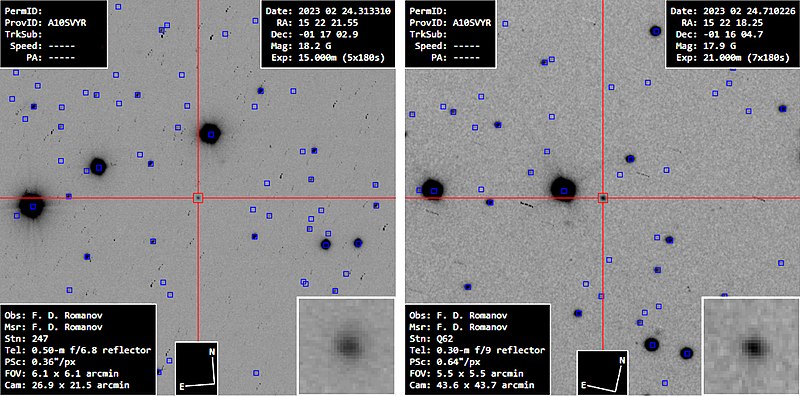
The trajectory of comet C/2023 A3
Once the comet approaches the Sun, it will circle close to Earth. But in doing so, it will pass almost directly between Earth and the Sun, making it difficult to observe. In early October, the comet will be in the dawn sky in Lion and near the constellations Hydra and Crater.
Then, in late October, when it appears on the other side of the sun, it will move into the evening sky, passing by Caput snake and inside Ophiuchus.

Tsuchinshan-ATLAS Comet Search Charts
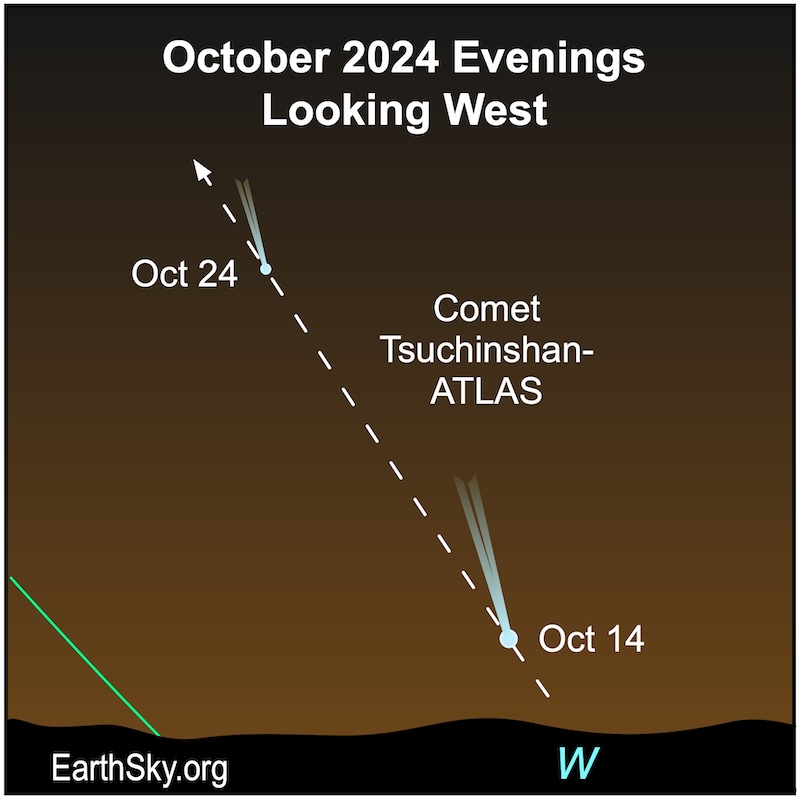
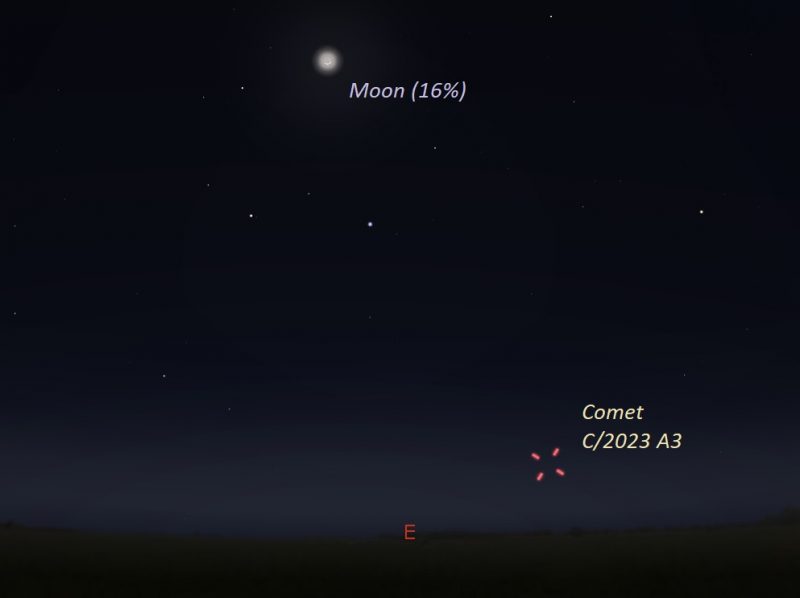
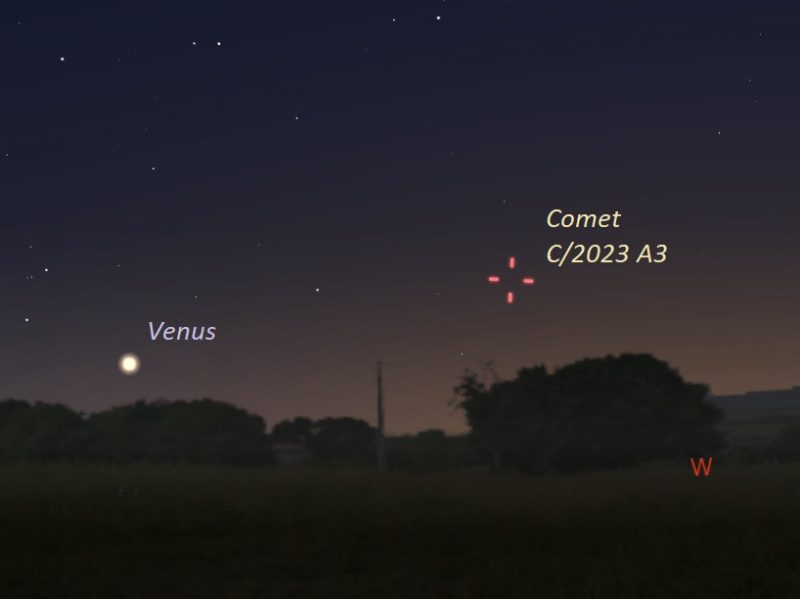

Bottom line: Comet Tsuchinshan-ATLAS, which had a chance to be a bright comet in September and October, may be disintegrating.
Source: The inevitable end of comet Tsuchinshan-ATLAS (C/2023 A3)
(tags to translate)space













Leave feedback about this